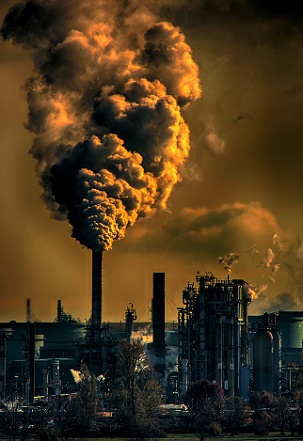 The heavy price of industry on our climate. Photo by Chris LeBoutillier on Unsplash
The heavy price of industry on our climate. Photo by Chris LeBoutillier on Unsplash
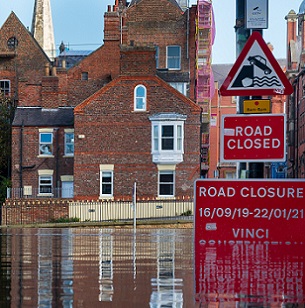 Global warming is causing more flooding
Global warming is causing more flooding
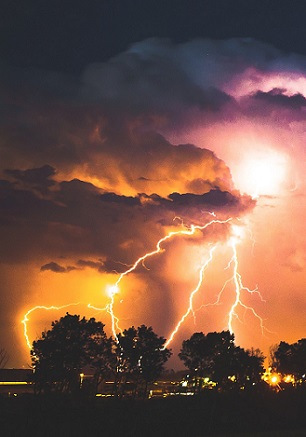 Our weather events are getting more extreme
Our weather events are getting more extreme
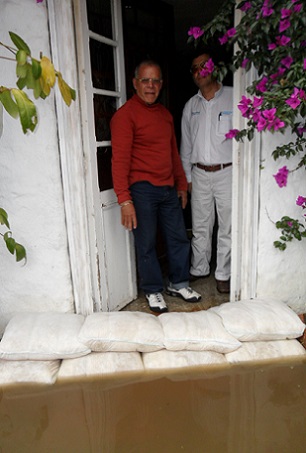 FloodSax alternative sandbags can stop floodwater getting into homes and businesses
FloodSax alternative sandbags can stop floodwater getting into homes and businesses
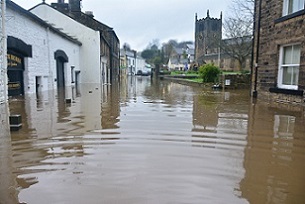 Flooding can be devastating for communities
Flooding can be devastating for communities
Why the Met Office says climate change such as severe flooding is worsening and how it’s been caused by humans
The Met Office has written a major report about climate change on its website and it makes grim reading about the impact of climate change but says there is still time to halt the devastating impact it’s having on the planet.
It’s looked at how climate change has developed to now cause extreme weather events and reveals how it all started.
In the 11,000 years before the Industrial Revolution, the average temperature across the world was stable at around 14°C. The Industrial Revolution began in the mid-1800s when humans began to burn fossil fuels such as coal, oil, and gas for fuel which set in motion climate change, the long-term shift in average weather patterns across the world.
The release of carbon dioxide and other greenhouse gases into the air has caused global temperatures to rise which has resulted in long-term changes to the climate.
Burning fossil fuels releases greenhouse gases such as carbon dioxide, methane and nitrous monoxide into the air and, over time, large quantities of these gases have built up in the atmosphere which traps the heat from the sun and causes the earth to heat up. The level of carbon dioxide in the atmosphere rose by 40% during the 20th and 21st century.
Scientists have been able to rule out natural events as causes of climate change such as volcanic activity, changes in solar activity, or natural sources of CO2.
How fast is the temperature rising?
Since the Industrial Revolution, the average temperature of the planet has risen by about 1°C which is a rapid change in terms of our global climate system but it’s higher in some countries than others. The 20 warmest years on record globally have been in the past 22 years so climate change is definitely accelerating.
What is the greenhouse effect?
When greenhouse gases such as carbon dioxide build in the atmosphere they act like a blanket around the earth. When sunlight (mostly short-wave radiation) hits this blanket it passes straight through and continues until it reaches the surface of the planet.
The earth then absorbs this sunlight and emits a different type of light, longer-wave infrared radiation, back out to space. As it leaves the atmosphere the infrared radiation also hits the greenhouse gas blanket. Most of it goes straight through, but some of it is absorbed and goes back down to earth. This traps the infrared radiation and causes the surface to heat – a process we call the ‘greenhouse effect.’
This greenhouse effect is critical to life on earth. Without a blanket of greenhouse gases trapping in heat the temperature would be bitterly cold and humans would be unable to survive. However, by adding extra greenhouse gases into the atmosphere, humans have created an enhanced greenhouse effect.
The greenhouse gas blanket is now thicker and is absorbing more infrared radiation than before. In other words, the greenhouse effect is stronger and, instead of keeping the earth at a stable temperature, it is causing the planet to heat up.
One-quarter of human-made greenhouse gas emissions come from burning fossil fuels for electricity and heat production.
Another quarter of human-made greenhouse gas emissions comes from agriculture, forestry, and other land use – for instance large areas forest have been chopped down to provide more land to grow crops. Forests are very good at removing carbon dioxide from the atmosphere and so cutting down trees allows carbon dioxide to build up in the atmosphere even more.
Greenhouse gases can live in our atmosphere for tens or hundreds of years. The gases that are already in our atmosphere are effectively locked in and will contribute to increasing temperatures.
Even if we stop all emissions today, we cannot avoid some level of warming. The amount of warming we will see, beyond what we have already caused, depends on the changes we make.
High emissions mean we will have warmer and wetter winters, hotter and drier summers and more frequent and intense weather extremes.
By 2070 winters in the UK are projected to be between 1°C and 4.5°C warmer and up to 30% wetter while summers will be between 1°C and 6°C warmer and up to 60% drier
How can we slow down or stop climate change?
In 2015, almost every country in the world signed a document promising to cut down on greenhouse gas emissions. The aim was to limit the average global temperature to 2°C above pre-industrial temperatures. If possible, countries pledged to aim for a 1.5°C limit but large and rapid reductions in global greenhouse gas emissions are needed to meet this goal.
To avoid significant increases in the average surface temperature we must cut greenhouse gas emissions and switch to renewable energy sources.
If we continue to burn fossil fuels and cut down forests at the same rate the planet could warm by more than 4°C by 2100. This warming could fundamentally change life on earth, with potentially drastic consequences.
Higher temperatures are causing glaciers and ice sheets to melt, adding more water to the oceans and causing the ocean level to rise. As oceans absorb more carbon dioxide it becomes more acidic.
Climate change is causing many extreme weather events to become more intense and frequent, such as heatwaves, droughts, and floods. It can also lead to a lack of food worldwide. High temperatures, extreme weather events, flooding and droughts can damage farmland, making it difficult for farmers to grow crops.
How can we stop climate change?
It's all about reducing global greenhouse gas emissions.
The most crucial step to limit climate change is to make big and rapid reductions in global greenhouse gas emissions – but there needs to be a major effort worldwide. In June 2019, the UK became the world’s first major economy to pass a law committing the country to a target of ‘net zero’ emissions by 2050.
In the meantime, we are seeing the impacts already of more severe weather events such as severe flooding – London has been hit by torrential rain several times over the summer of 2021 – and wildfires worldwide.
Many people don’t realise that councils in the UK have no responsibility to provide sandbags so people are responsible for protecting their own homes and businesses from flooding.
Some councils recommend FloodSax (http://www.floodsax.co.uk/) alternative sandbags for flood protection which are a flexible alternative to traditional sandbags and are space-saving to store and quick and easy to deploy.
When FloodSax come into contact with water they absorb 20 litres which transforms them from being as light as a pillowcase to being more effective than traditional sandbags in just three minutes.
They are vacuum-packed so are space-saving to store and quick and easy to deploy. In their dry state FloodSax are thin with a large surface area so are ideal to soak up drips, leaks and spills indoors in hard-to-reach places such as beneath boilers, below radiators and underneath pipes.
More than 2.5 million have now been sold worldwide.
To buy FloodSax go to http://www.floodsax.co.uk/buy/uk-suppliers/